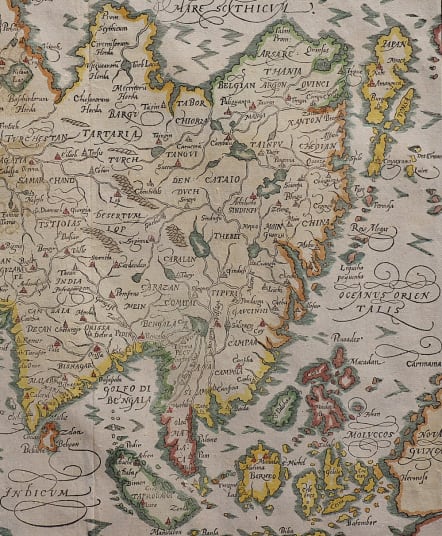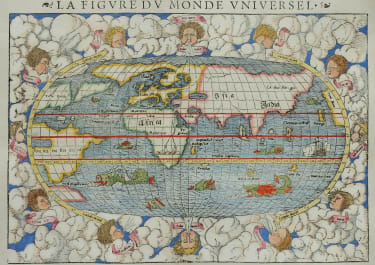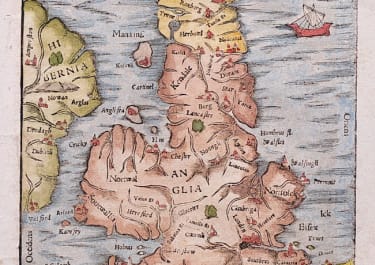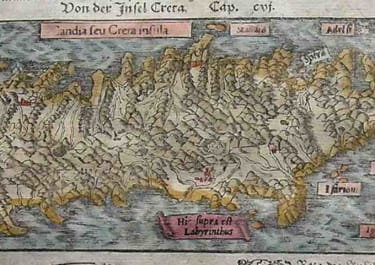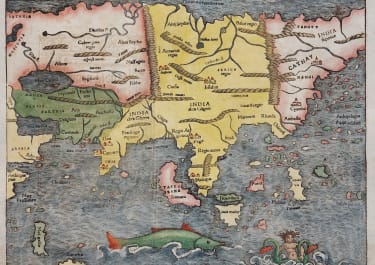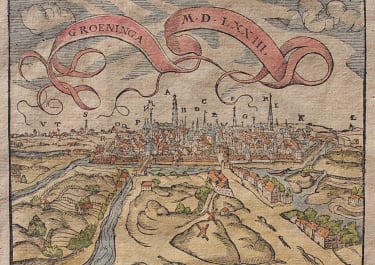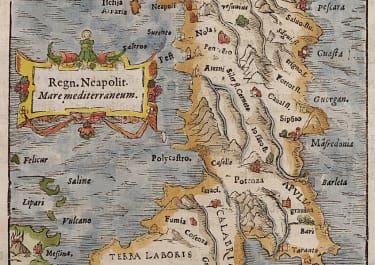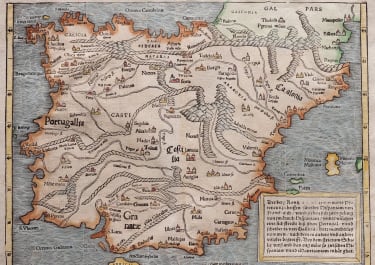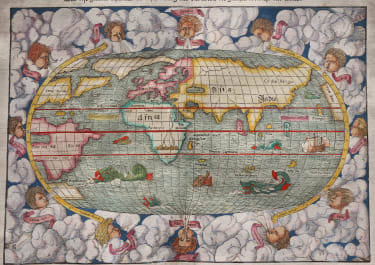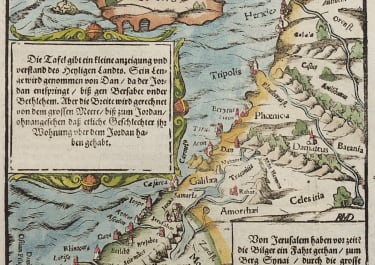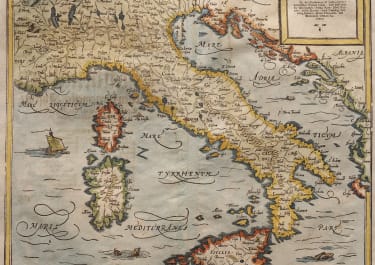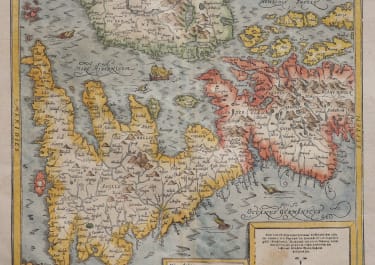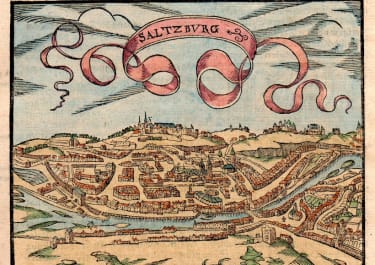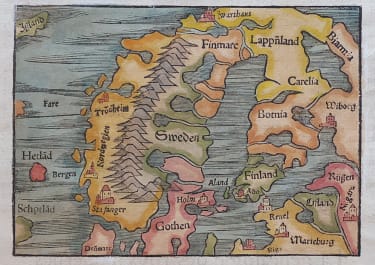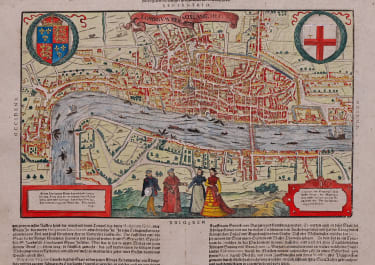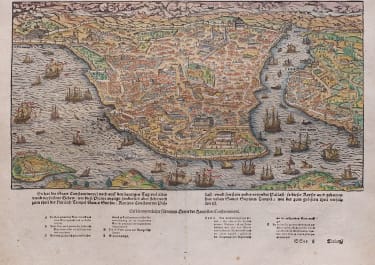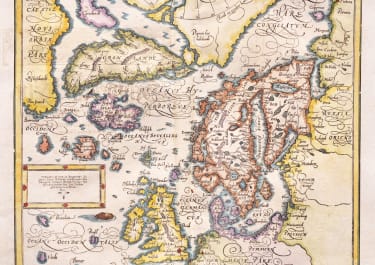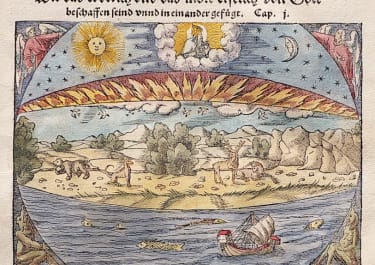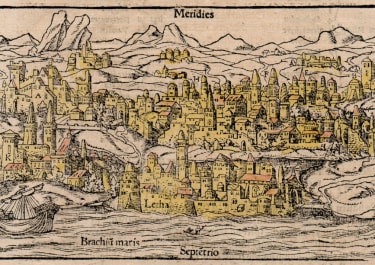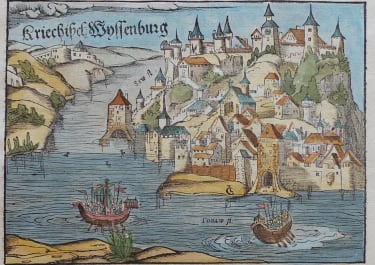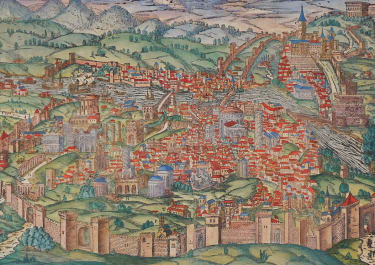ASIA
£495
Full Title Asia wie es jetziger zeit nach den furnemesten Herrschafften abgetheilet und beschriben ist.?
Attractive Munster map of Asia, from Munster’s Cosmographia, one of the most influential geographical works of the 16th Century. This is what is generally considered the second Munster map of Asia.
The geography taken from the important Ortelius 1567 Asiae Nova Descriptio this map covers from the Mediterranean to Japan and from the Arctic to Java. numerous towns and cities are noted. Sumatra is identified as Taprobana. Japan appears in its kite-form and is based upon Jesuit sources. The great rivers of Southeast Asia, the Mekong, Chao Phraya, Irrawaddy, and Brahmaputra, are drawn as originating from a large lake in the mountains of what is today northern Thailand no doubt a precursor of the apocryphal lake of Chiamay. The islands of The East Indies, collectively identified here as the ‘Moluccos,’ are vaguely rendered but recognizable.
Excellent hand colour
Very good condition
code : M4758
Cartographer : Sebastian Munster
Date : 1588 Basel
Size : 32*37 cms Sheet 37*44 cms
availability : Available
Price : £495
Originally a scholar studying Hebrew, Greek and mathematics, Sebastian Munster (1489-1552) eventually specialised in mathematical geography and cartography. It was this double ability - as a classicist and mathematician - that was to prove invaluable when Munster set himself to preparing new editions of Solinus’ “Memorabilia” and Mela’s “De Situ Orbis”, two classical descriptive geographies containing maps, and his own two greatest works, the “Geographia” and “Cosmographia”. These reflect the widespread interest in classical texts, which were being rediscovered in the fifteenth century, and being disseminated in the later fifteenth and sixteenth century, through the new medium of printing.
The “Geographia” was a translation of Ptolemy’s landmark geographical text, compiled in about 150 AD., illustrated with maps based on Ptolemy’s calculations, but also, in recognition of the increased geographical awareness, contains a section of modern maps. In the first edition of the “Geographia”, Munster included 27 ancient Ptolemaic maps and 21 modern maps, printed from woodblocks. Subsequent editions of the “Cosmographia” were to contain a vast number of maps and plans.
One consequence of Munster’s work was the impetus it gave to regional mapping of Germany, but Munster was also the first cartographer to produce a set of maps of the four continents on separate maps. Most importantly, through his books (the “Geographia” and “Cosmographia” alone ran to over forty editions in six languages), Munster was responsible for diffusing the most up-to-date geographical information throughout Europe.


